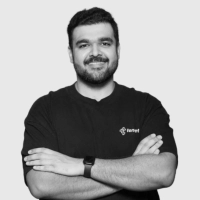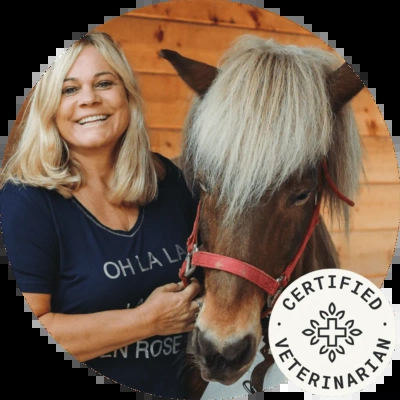Glean essential strategies from industry leaders on how to skillfully pivot your entrepreneurial venture. This article presents a collection of expert insights tailored for founders ready to shift their business direction. Explore actionable advice on making transformative decisions without losing sight of your core values.
- Pivot to Consultative Selling
- Transition to Brand Authority Firm
- Focus on Field Management Sector
- Specialize in Storage Operator SEO
- Transform Parking Lot into Outdoor Dining
- Shift to Pre-Configured Workflows
- Adapt to Online Marketing Workshops
- Build Recurring Revenue with Monthly Services
- Expand Offerings Beyond Pitch Decks
- Diversify Revenue with Online Courses
- Simplify Product Based on Feedback
- Move from Paid Ads to Organic Growth
- Shift to Backyard Setups During Pandemic
- Focus on Quality Over Volume
- Quickly Cut Moderately Successful Ideas
- Combine Marketing with Human Connection
- Separate Pet Line from Core Brand
Pivot to Consultative Selling
As the CEO of a UI/UX and growth marketing company, my biggest pivot came when we were burning cash on a product-led growth strategy that simply wasn’t working. We had built this beautiful self-serve platform that prospects could try before talking to sales. The data said it should work. Industry experts said it should work. But after six months, our conversion rates were abysmal.
The turning point came during a brutally honest conversation with a prospect who said: “Your product is impressive, but I need someone to show me exactly how it solves my specific problems.” That’s when it hit me—we weren’t selling software; we were selling transformation. And transformation requires guidance.
We pivoted from product-led to consultative selling overnight. We scrapped the self-serve demo, doubled down on personalized discovery calls, and increased prices by 60% to reflect the added value. Revenue tripled within 90 days.
The lesson? The market doesn’t care about your preferred business model. My three-part framework for navigating pivots now:
- Listen to rejection reasons obsessively. Not just what prospects say, but what they actually mean.
- Be willing to challenge your most cherished assumptions. The hardest part wasn’t executing the new strategy—it was admitting our original vision was wrong.
- Make decisive cuts. We immediately eliminated everything supporting the old direction, including features our team had spent months building.
When reality collides with your strategy, reality always wins. The question isn’t whether you’ll need to pivot—it’s whether you’ll do it before you run out of runway.

Shantanu Pandey, Founder & CEO, Tenet
Transition to Brand Authority Firm
One of the most defining pivots in my journey was when I transitioned my company from a traditional PR agency into a framework-based, brand authority firm. For years, we operated on standard monthly retainers, offering reactive PR. However, I realized it wasn’t scalable, drained my team, and didn’t align with the high-impact, measurable results I knew clients were craving. The real prompt? Burnout—paired with a clear realization that media coverage without brand positioning wasn’t moving the needle for clients long-term.
My advice to entrepreneurs facing a pivot is: don’t wait for burnout or loss of momentum to force your hand. Listen early—to your instincts, your customers, and your numbers. A pivot isn’t a failure; it’s a strategy shift. When I rebuilt the business around our proprietary PR frameworks like PRISM Ascend™, client satisfaction soared, our internal operations became smoother, and our reputation grew tenfold. A successful pivot comes from clarity, not panic—be willing to disrupt your process before the market does it for you.

Kristin Marquet, Founder & Creative Director, Marquet Media
Focus on Field Management Sector
As an entrepreneur, I experienced a significant pivot in our business strategy when we initially focused heavily on building a product tailored to a broad range of industries, thinking that this would maximize our customer base. However, after launching our field management SaaS platform, we quickly realized that trying to serve so many sectors left us spread too thin, and our product wasn’t as tailored or effective as it needed to be for any single industry.
The change was prompted by customer feedback. We had clients from various fields, but they were all asking for more specialized features that could better serve their unique needs. After analyzing this feedback, we decided to pivot our strategy and narrow our focus to specifically target the field management sector—where we could truly excel. We honed in on offering features that catered directly to the challenges faced by field service teams, such as scheduling, dispatching, and real-time data tracking.
Pivoting was not easy, but it was necessary. We had to rework our marketing, refine our messaging, and adjust our development roadmap. We also had to deal with the fact that we had initially invested resources into a product that no longer aligned with our vision.
My advice to others facing a similar situation is to listen closely to your customers and be willing to change course when needed. Don’t be afraid to make bold decisions if they’re in the best interest of your business. It’s important to stay flexible and open-minded. Sometimes, the best opportunities arise when you focus on a more niche market where you can make a real impact.

Mark Tipton, CEO & Founder, Aspire
Specialize in Storage Operator SEO
A key moment when I had to pivot my business strategy was when I started receiving inquiries from self-storage owners who needed assistance with their local SEO and Google visibility. At the time, most of our clients were general service businesses, and we weren’t focused on any specific niche. However, the more we worked with storage operators, the more I realized how underserved that industry was when it came to quality digital marketing.
The pivot was driven by market demand—storage businesses were increasingly competing online, and many lacked the SEO knowledge or internal resources to improve their visibility. We adjusted our messaging, created specific service packages for storage operators, and started publishing niche content that spoke directly to their challenges. That shift helped us grow more quickly and deliver better results because we were solving more focused problems.
My advice for anyone facing a similar pivot is to listen to your clients and observe where the demand is organically appearing. Don’t be afraid to niche down. Specializing can open doors that a general approach may never reach, and it often leads to deeper expertise and better client outcomes.

John Reinesch, Founder and Marketing Specialist, Asset Growth
Transform Parking Lot into Outdoor Dining
When indoor dining shut down, I transformed our restaurant’s parking lot into an outdoor garden setup and launched family-style takeout meals, which helped us keep most of our staff employed. My biggest piece of advice is to listen to your team’s ideas during tough times—our best solutions came from our servers and kitchen staff who knew exactly what our regular customers would love.

Allen Kou, Owner and Operator, Zinfandel Grille
Shift to Pre-Configured Workflows
One moment that stands out was when we initially built our product for a market we thought needed it, only to realize six months later that we were solving the wrong problem for the wrong audience. We had focused heavily on early adopters in the startup world, assuming they’d love the flexibility and customization of our platform. While the feedback was positive, the conversions were painfully low. They loved the idea, not the commitment.
The pivot came after a tough quarter and a very honest customer interview. One user said, “This is great, but I don’t have the bandwidth to figure out how to make it work for my team.” That hit hard—but it was the turning point. We realized our value wasn’t in flexibility, it was in clarity and speed. So we stripped down the product, rebuilt it with pre-configured workflows for specific use cases, and shifted our messaging to focus on mid-sized teams in more traditional industries who needed guidance, not options.
The result? We started closing deals with less friction and way more confidence. It was still our same core technology, but delivered in a way that solved a clearer, more urgent problem for a different buyer.
My advice to anyone facing a similar crossroads: listen harder. Sometimes the signals aren’t in metrics—they’re in the friction, the hesitation, the “almosts.” And when you do pivot, don’t see it as failure. See it as alignment. A strategy that looks good on paper means nothing if it doesn’t work in the real world. Let your users write the next version of your roadmap.

Patric Edwards, Founder & Principal Software Architect, Cirrus Bridge
Adapt to Online Marketing Workshops
As an entrepreneur, there was a time when I had to pivot my business strategy due to unforeseen market shifts. Initially, my business was focused on in-person workshops for marketing, but the pandemic made it clear that I had to quickly adapt to an online model. The transition was challenging—shifting from physical events to virtual platforms involved new technology, a different approach to engagement, and a new set of marketing strategies.
What prompted the change was a sharp decline in bookings as people moved away from face-to-face interactions and the realization that the digital world was the future. I had to focus on creating engaging online content, refining my email marketing strategy, and leveraging social media more effectively.
The advice I’d offer to others facing similar situations is to remain flexible and listen to market trends. It’s essential to keep an open mind and not be afraid to try new things, even if it means stepping outside your original business model. Flexibility and quick adaptation are key to surviving and thriving in unpredictable times.

Georgi Petrov, CMO, Entrepreneur, and Content Creator, AIG MARKETER
Build Recurring Revenue with Monthly Services
One major pivot came when I realized project-based work alone wasn’t creating consistent income. To fix that, we shifted from relying solely on one-time web design projects to building recurring revenue through monthly services. We started offering ongoing services like website maintenance, SEO, PPC Ads, and email marketing. This shift brought steady cash flow and helped us build stronger, longer-term client relationships. We’ve also partnered with outside companies to provide an even wider breadth of services.
Another big pivot happened when we assumed we could rely entirely on inbound marketing. That worked for a while—but as AI began dominating search results and Google kept changing its algorithms, organic traffic became less predictable. We had to adjust fast. That meant putting time and energy into building an outbound sales process and sales representatives, so we could actively reach out to potential clients instead of just waiting to be found. We also joined local organizations to network with other local businesses in the surrounding communities.
My advice to other entrepreneurs: don’t get too comfortable. Business conditions change fast, and the ability to pivot is everything. Look for ways to create consistent revenue streams, and always have a proactive plan to generate leads—even when things are going well.

Jason Holicky, Owner and Marketing Consultant, Holicky Corporation
Expand Offerings Beyond Pitch Decks
I’ve certainly experienced the necessity of pivoting, and one moment stands out clearly. When we first launched, our sole focus was on pitch deck creation—helping startups craft compelling stories to secure funding. It worked well initially, but as we started attracting more clients, we noticed a recurring issue: many of these startups weren’t just struggling with their presentation; they were grappling with deeper challenges like finding product-market fit or planning their fundraising strategy. I remember one founder in particular—a brilliant entrepreneur with groundbreaking ideas—but their pitch deck was just the tip of the iceberg. Without a solid strategy behind it, investors weren’t biting.
That realization prompted us to expand our offerings. Instead of just building decks, we started working hands-on with startups to address foundational issues, like business model optimization, investor targeting, and even market analysis. It was a nerve-wracking shift, honestly—it forced us to rethink our processes, build new expertise, and hire team members with diverse skill sets. But the payoff was worth it. Today, we are a much more comprehensive partner for startups on their fundraising journeys.
For anyone facing the need to pivot, my advice would be this: listen closely to the pain points your customers are expressing. And don’t be afraid to go beyond your comfort zone to solve them. A pivot isn’t just about survival; it’s about finding opportunities to deliver greater value—even if it means questioning what you thought your business was about. Also, don’t rush—take time to test your new strategy on a small scale before committing fully.

Niclas Schlopsna, Managing Consultant and CEO, spectup
Diversify Revenue with Online Courses
A major shift in online search algorithms forced a complete overhaul of my business strategy. Traffic declined, engagement dropped, and relying on traditional content marketing was no longer sustainable. The digital landscape had changed, and adapting quickly was the only option.
The first step was diversifying revenue streams. Relying solely on advertising and affiliate marketing created a vulnerability. Developing online courses, premium content, and digital products transformed passive readers into an engaged community. Email marketing and social media became primary tools for direct audience connection, reducing dependence on search engine rankings. Technical SEO improvements and strategic content updates helped regain visibility, but the key was building a resilient, multi-channel approach.
Entrepreneurs must recognize when old strategies stop working. If key metrics decline, waiting for things to improve is not a strategy. Test new approaches, refine what delivers results, and accept that change is constant. A single platform or revenue source should never dictate business success. Control your audience relationship, invest in adaptable strategies, and remain flexible. Growth belongs to those willing to evolve.

Timothy Burgin, Founder and Executive Director, Yoga Basics
Simplify Product Based on Feedback
One of the biggest pivots we made was simplifying the product. In the early days, we were trying to build something with a lot of flexibility and features. We thought more tools meant more value. However, once we started getting feedback from clinicians and practice managers, we realized we were off track. People didn’t want more; they wanted less. They needed something that worked quickly, didn’t require training, and just made their lives easier.
That feedback forced us to change our approach. We cut features, simplified the interface, and focused on creating a smoother experience. After that, things really started to click. Usage increased, onboarding became easier, and we started seeing real momentum.
My advice is simple: Don’t get too attached to your original idea. If your customers are telling you something, listen. Data and feedback should guide your decisions. The earlier you course-correct, the better. A pivot doesn’t mean failure. It means you’re learning, and that’s what makes a strong business. Be honest about what’s working and what’s not, and don’t let pride get in the way of building something people actually want to use.

Jamie Frew, CEO, Carepatron
Move from Paid Ads to Organic Growth
Paid ads worked—until they didn’t. Acquisition costs skyrocketed, and returns shrank. The strategy was unsustainable. The shift was clear: move from paid acquisition to organic growth. We doubled down on SEO, content marketing, and lifecycle emails. Blog traffic surged. Word-of-mouth referrals grew. Retention improved. Growth stabilized.
Every entrepreneur faces a moment when the numbers stop making sense. The biggest mistake? Waiting too long. If CAC rises faster than LTV, the model is broken. If churn increases, something is missing. Data tells the story. We saw the trend early, tested new approaches, and pivoted fast. Instead of fighting rising ad costs, we built an engaged audience that converted naturally.
For those facing a pivot, speed is everything. Remove emotion from decisions. Rely on data. If a strategy stops working, shift focus. If acquisition becomes too expensive, invest in retention. If engagement drops, improve the product experience. The market evolves. The best businesses evolve faster.

Josh Bluman, Co-Founder, Hoppy Copy
Shift to Backyard Setups During Pandemic
One of the biggest pivots we made was during the early days of the pandemic. Practically overnight, our entire event schedule was cleared out. Large gatherings were off the table, and understandably, people were cautious. It forced me to really step back and ask, “What do families still need right now?” The answer was joy, distraction, and safe ways to celebrate. So we shifted our focus to smaller, backyard setups—things like birthday packages for families in quarantine, no-contact delivery, and even drive-by party decorations. It wasn’t what we were used to, but it kept our team working and our customers smiling.
My advice to other business owners facing a sudden shift is to listen closely to what your customers are going through. Their needs might change, but they still need you—just in a different way. Don’t be afraid to experiment. Some of our new offerings, born out of necessity, actually stuck around because they filled a real gap. Pivoting doesn’t always mean changing your whole identity. Sometimes, it’s just about adjusting the lens and finding new ways to serve the same mission.

Joe Horan, Owner & CEO, Jumper Bee
Focus on Quality Over Volume
There was a point in my business where I felt completely drained. We were saying yes to every project, such as cheap fixes, urgent jobs, and anything that paid. It looked fine from the outside, but behind the scenes, it was chaos.
One client, who paid less than $2,000, ended up needing more time than a $20,000 project. That was my breaking point. I sat down with my team and said, “We can’t keep doing this.”
So, we made a big shift. We stopped chasing volume and focused on quality. We set a minimum project value, tightened our process, and started working only with clients who actually valued what we do.
At first, it was scary turning work down. But within months, things got better – more time, better projects, happier team.
If you’re stuck trying to please everyone, take a step back. Focus on the work you want to do, not just what’s available.

Nirmal Gyanwali, Founder & CMO, WP Creative
Quickly Cut Moderately Successful Ideas
In my first experience building a venture-backed startup, we achieved product-market fit with our initial idea in less than a year. In my second experience, it took five years to reach some semblance of product-market fit and required seven hard pivots. The key for the second venture was being willing to quickly cut ideas that were only moderately successful, as we were striving for venture scale, even though some were generating considerable revenue for us.
It was most painful to “fire” perfectly good customers because they didn’t fit our new direction, and we often managed two products simultaneously (i.e., the old pre-pivot product and the new post-pivot product). We always eventually found a suitable home for our customers with a competitor whenever these transitions occurred. This goodwill sometimes persisted through the pivots and yielded many timely favors.
I would advise fellow entrepreneurs to conduct more customer development and research, and to shorten the transition period between pivots.

Louis-Victor Jadavji, CEO, Taloflow
Combine Marketing with Human Connection
I entered the business world shortly after the AI boom had transformed the landscape, when I needed to develop a long-term business strategy. I had intended to start a marketing and development company, but the development aspect was uncertain. I came with a diverse background—management, pastoral, and restaurant experience, and nearly an MBA—but I lacked a platform or the credibility to support my ambitions, especially as I was still in the early stages of my personal recovery journey.
Initially, I accepted any marketing job that came my way, using those experiences as stepping stones. Over time, these projects evolved into a model that allowed for monthly partnerships and retainers. The real breakthrough occurred when I remembered my certification as a suicide prevention trainer. That moment inspired a new vision: I could combine authentic, people-first marketing with development strategies that genuinely bridged the gap between business and human connection. By focusing on transparency, trust, and meaning—a trend gaining momentum across the industry—I finally created a model that aligned with who I was and what I believed in.
My journey was characterized by constant pivoting and trial and error, guided by the wisdom of coaches, mentors, and countless hours of reading. If there’s one piece of advice I’d offer to entrepreneurs facing similar challenges, it’s to begin by fully acknowledging your current position rather than pursuing a distant, idealized version of where you want to be. Projecting that future can distort your view of reality, often leading to compromises that diminish your authenticity. By embracing your present circumstances, you can make genuine, sustainable progress without losing your integrity in the process.

Paule Patterson, Owner-Development & Marketing Consultant, Stigma Marketing & Development
Separate Pet Line from Core Brand
The decision to separate the pet line from our core brand and build separate stands out as one of the most defining turning points in our journey. Considering my lifetime of personal and professional animal care experience, it seemed obvious. However, I must be honest; it didn’t start this way. In fact, one of our early mistakes was failing to create a separate pet brand. Expecting our mission to find support broadly across market segments, we placed all things human wellness, skin, and pets together, but it didn’t resonate the way we wanted it to.
I remember the turning point clearly. Similar to our own Panda, who received relief, in part, from our hemp oil for the initial applications, we were some of the early developers of a powerful CBD pet medicine which we felt could really make a difference in dogs’ quality of life. But every time I tried to explain the benefits, someone asked, “Is this safe for pets?” “Isn’t it meant for people?” The crossover was not doing us any favors; it was losing our message. That’s when I realized that we needed to create branding for our pets, a recognition that says we are here for them, a voice and platform just for them.
My advice to fellow owners is this: don’t merely alter the marketing; expand your view to the framework when you notice the message falls flat. If the framework gives volume to each part, then be prepared to unwind the strands of your business. The data backs it up: a study found that 55% of pet owners prefer niche pet brands over general wellness companies when purchasing supplements.

Helle Brandrup, Veterinarian Medical Expert, Neurogan Pets
